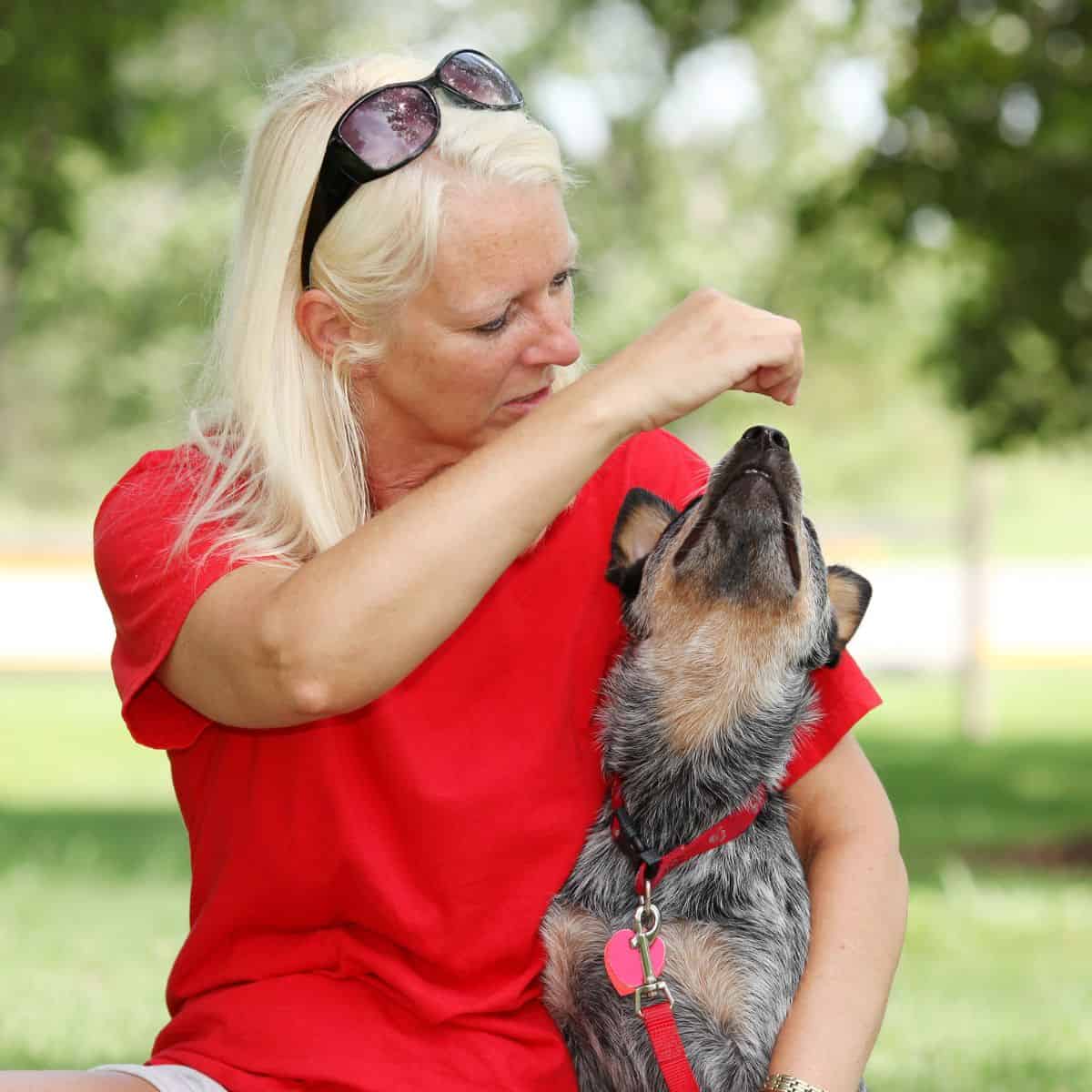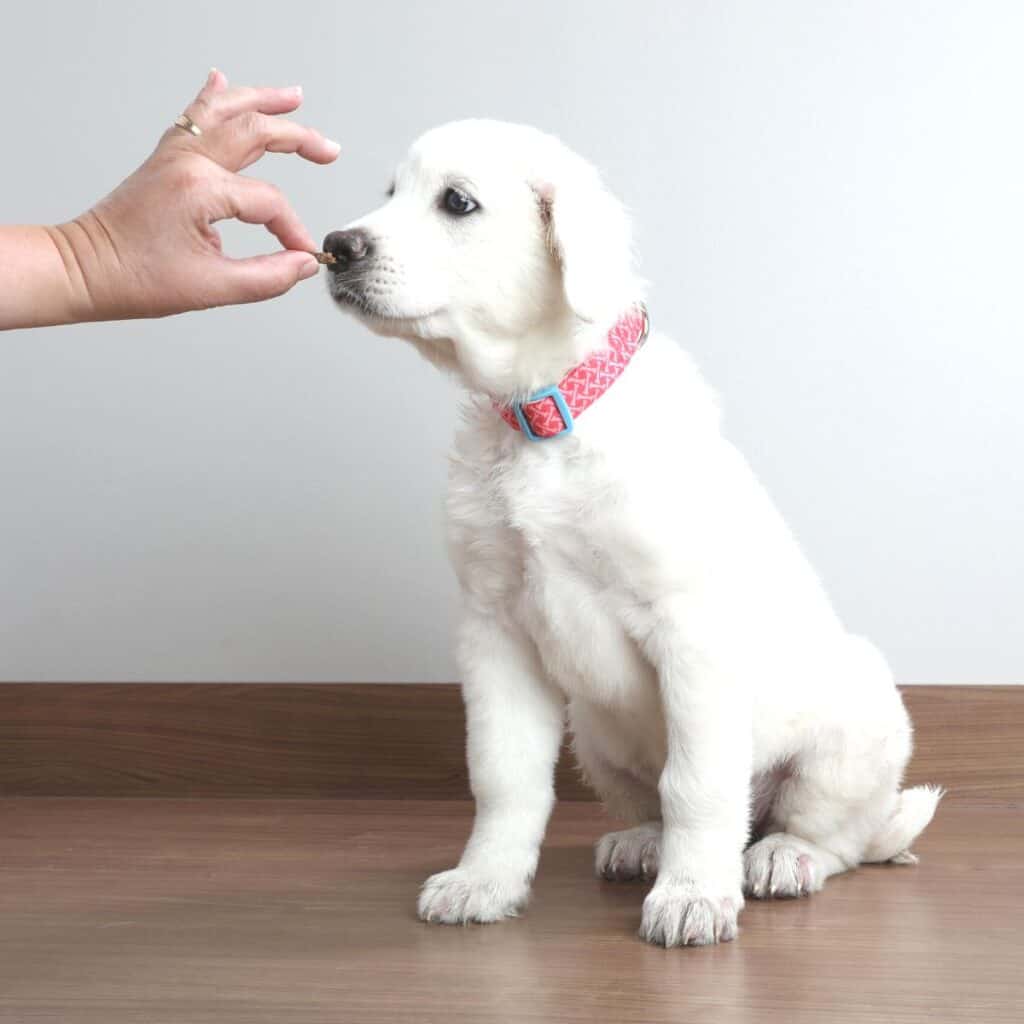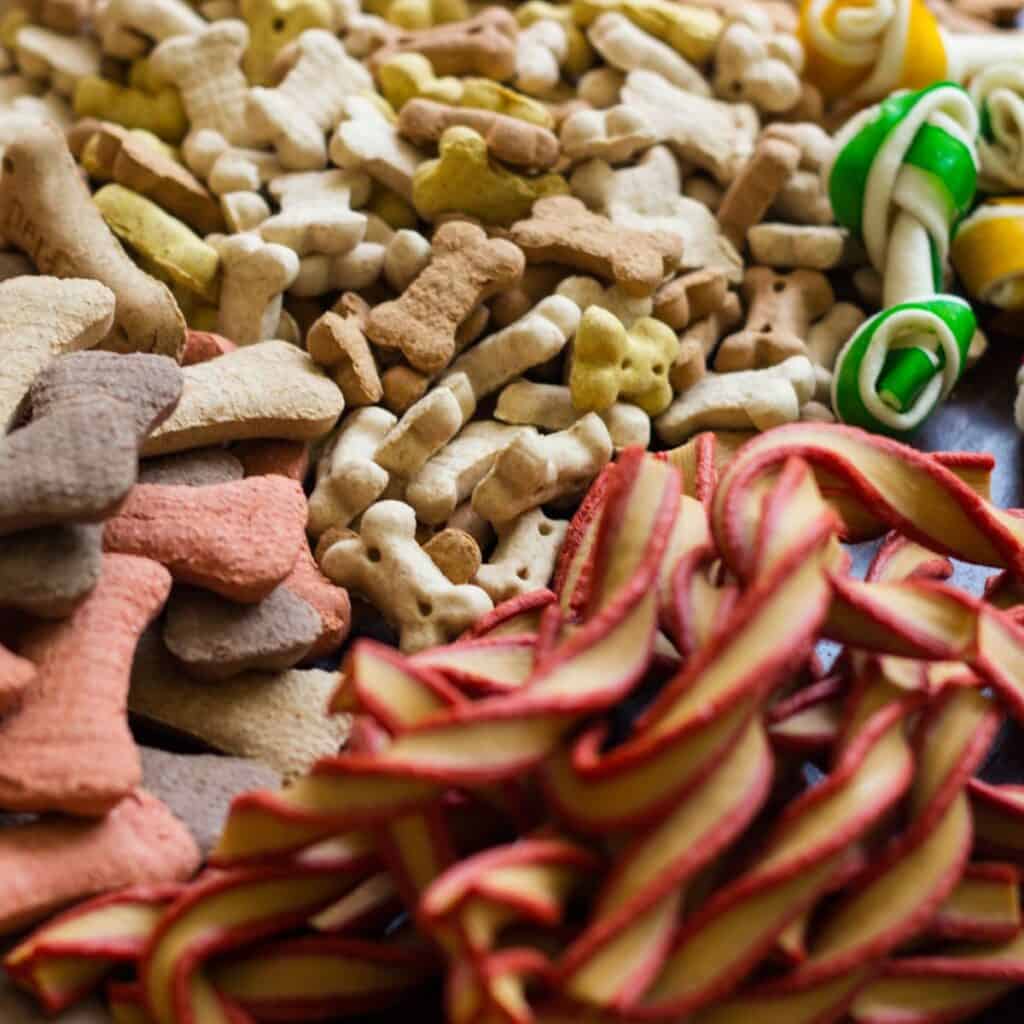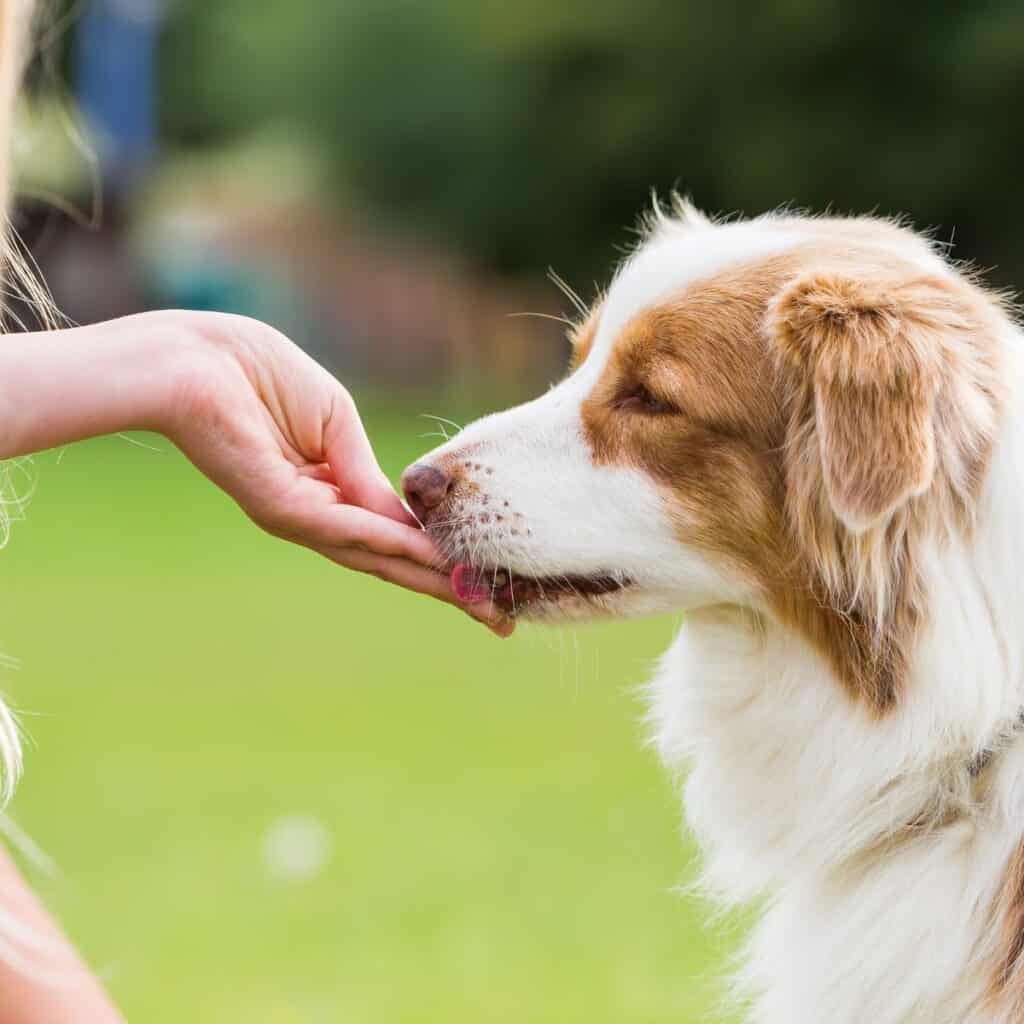You may have heard this reference to high-value dog treats. I recall when I first heard high-value dog treats referenced it struck me as kind of off. Aren’t all dog treats high-value dog treats?

That is precisely the point of a dog treat to reward your dog and entice him to do something, doesn’t that by its nature call for a treat that means something and is of high value? Not really, high-value treats are important and their differences and when to use them is very important.
When to use high-value dog treats versus low-value dog treats
We had to consider this one a bit and think about our own doggie treat cabinet where there is a large box of crunchy dog bones and small liver treats.
Saying good night go to your bed or crate, definitely a low-value treat. Saying goodbye we are going to leave now, definitely low value and something that will take a bit longer to get through.
On the other hand, “yeah you have not run off and you came when I called (to our Great Pyrenees only) here is a flavorful treat you will remember hopefully when I call you next” is a high-value treat.

Teaching our new puppy to sit, is definitely a call for a high-value treat. Once your dog is familiar with the command a low value treat will do.
In short, high-value dog treats are for when you want an immediate response, reward training, and low-value treat when you want to say I love you or use them as part of a routine (particularly helpful with senior dogs who love routine and maybe restless at night!)
4 Differences between Low-value dog treats and high-value dog treats
We did some thinking, and of course, experimenting, and here is what we learned about high-value dog treats vs low-value dog treats:
Dog Treat Taste
High-value dog treats seem to have a stronger taste than normal treats. A high-value treat may be artificially flavored or all-natural but one thing is true the taste is more concentrated with the hopes that your dog will be motivated by the treat.
Think bacon vs bacon-flavored chips.
Dog Treat Texture
High-value treats seem to be moister, dogs can eat them quickly as part of a training session which is facilitated by their moist and chewable texture. There is not a large delay while they crunch through a treat (although crunchy bones do have their place in our dog’s wellness care).
Dog Treat Smell

High-value treats are tantalizing as they are meant to motivate dogs. The smell will be immediately recognizable to your dog which will cause them to act even before the dog treat is given and later recalled.
Many dog treats that may be familiar as high-value treats like anything labeled “Baco . . “ is usually treated with artificial taste and smell, however, you can replicate this desire easily with natural ingredients, like freeze dried Liver Treats from Rocco and Roxie.
Dog Treat Portability
High-value treats should be portable, a dog training session or an impromptu command that is honored are all great times to have high-value treats. Much like lugging around a big camera versus an iPhone if you don’t have it you won’t get that great doggie photo!
If your treat is not on you, you can not take advantage of a great dog training opportunity when your dog does something right.
High-Value Dog Treat Recipe
Now that we know the differences here is our favorite high-value dog treat recipe. We have found that organic liver is extremely enticing for our dogs! Here is how we prepare it for a quick, savory high-value treat. Also, our seniors get really motivated with this soft baked dog treat recipe here.
Dog Liver Air Fryer Treats
4 ounces of organic cow liver. Here is where we found the least expensive and accessible organic liver.
About 1 cup of water
Add liver to blender cup, we use the Ninja with the individual cup.
Consistency should be thick, not runny.
Add parchment paper to the bottom of air fryer
Pour little dollops into air fryer and cook on low for 40 minutes, increase temp and cook for 20 minutes
Break further apart into small pieces and store in the refrigerator or freeze.

High-value treats can be a great motivator and useful tool in dog training and great for senior dogs to add extra vitamins and concentrated nutrients, but too many! Keep the interest high by using high-value treats sparingly, and get out the low-value treats for frequent rewards and loves.
Looking for more low value treat ideas? Kong’s are low value, find some Kong recipes to keep your dog happy and calm here.
Find some more DIY dog treat recipes.
Low Value vs High Value Dog Treats FAQ
A treat that will be motivating to your dog, portable, smells enticing, and is flavorful (smell is important to flavor for dogs) like freeze dried liver, bacon, cheese, hot dogs and maybe even a Pupccino.
Yes! Hot dogs are a high value treat they meet the high value treat criteria of being super motivating due to smell and taste and they are portable when sliced so that you can carry them and use them as needed when training. Try preservative free hot dogs.
A low value treat is a treat that does not excite or motivate your dog as much and is not quite as delicious. It may because they get it all the time, kibble, dry bones, sweet potato treats are low value treats for most dogs.
Preservatives, fake flavors and artificial colors are some of the things you should avoid in your dogs treats.

